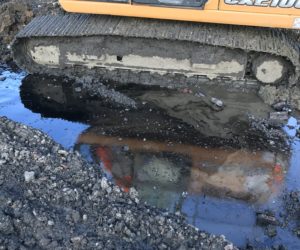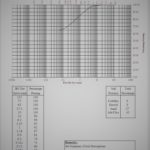
The Phase 2 Site Investigation report is ultimately what the client receives. A typical Soilutions Phase 2 report will contain the following:
Introduction
Outlining some background as to why the report was commissioned, what the objectives of the Phase 2 Site Investigation were and what tasks were undertaken to achieve them.
Setting
Presenting a current description of the site and its neighbours, a summary of any previous reports or investigations with particular attention to any Phase 1 preliminary conceptual site models.
Site Works
 The report presents a comprehensive factual account of all site works undertaken as part of the Phase 2. It should detail and justify all site investigation locations and explain any deviations from the intended work.
The report presents a comprehensive factual account of all site works undertaken as part of the Phase 2. It should detail and justify all site investigation locations and explain any deviations from the intended work.
The intrusive investigation will typically be accompanied by a summary of the different strata encountered across the site and what testing, samples and/or monitoring was undertaken. Detail of any monitoring infrastructure installed or already present would also be presented.
Visual or olfactory evidence of contamination observed during works will also be summarised here.
Geotechnical Appraisal
 Soilutions recommend geotechnical testing and sampling is undertaken during the Phase 2 Site Investigation works. Whilst this may not be strictly necessary with regard to assessing contamination risks, the characteristics of the underlying soils and bedrock can be very important when redeveloping land with above and below-ground structures. Capturing this data early on in a project saves remobilisation costs and prevents the over-reliance on assumptions and judgements.
Soilutions recommend geotechnical testing and sampling is undertaken during the Phase 2 Site Investigation works. Whilst this may not be strictly necessary with regard to assessing contamination risks, the characteristics of the underlying soils and bedrock can be very important when redeveloping land with above and below-ground structures. Capturing this data early on in a project saves remobilisation costs and prevents the over-reliance on assumptions and judgements.
Soilutions will interpret site and laboratory results and provide advice regarding foundation design, soakaway drainage and/or concrete classification as necessary.
Environmental Appraisal
This section provides detail as to how the site-derived environmental data such as the laboratory chemical testing of soils and groundwater is assessed to determine the significance of any risks to human health and the wider environment.
Here, the pollutant linkages identified in previous Phase 1 Desk Studies or other works are examined and quantitatively assessed using UK guidance and industry best practices. Generic quantitative risk assessment (GQRA) compares chemical concentrations against appropriate conservative criteria derived to be protective of various receptors. If necessary, this can be examined further using more site specific modelling of risks and exposures, a detail quantitative risk assessment (DQRA).
Risks from vapours, ground gas, surface water or other media may also be assessed and reported.
Following the assessment of risks, the preliminary conceptual site model is updated to show the current understanding of risk at the site.
Conclusions
The report will identify any risks considered significant to human health, the wider environment or buildings. It will also summarise any geotechnical constraints.
Where there are considered to be one or more significant risks at a site, there will typically be a requirement to undertake some kind of remediation. A given issue may be remediated via a number of solutions, all with associated advantages and disadvantages – weighing these up requires a remedial Options Appraisal.
Whilst it is not the industry standard to include these remedial Options Appraisals into a Phase 2 Site Investigation report, Soilutions believe it helps you understand what further work will be required and will save you time in implementing the necessary solution.
Appendices
A Phase 2 report should be a full record of all works undertaken. As such, appendices are used to hold data such as full laboratory reports, borehole logs etc. To maintain readability of the main report text, other records such as plans, figures, calibration certificates, site diaries and photographs are also placed in appendices and referred to within the main text.
2021
Phase 2 Site Investigations
Do you want an insight on Phase 2 Site Investigations? This eBook has been written specifically for those new to contaminated land and provides an overview for the uninitiated of what steps you need to follow.


